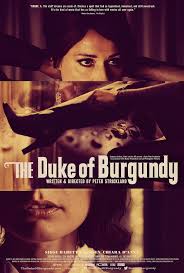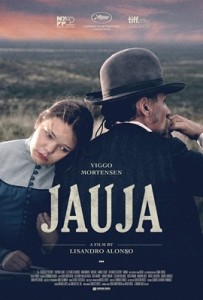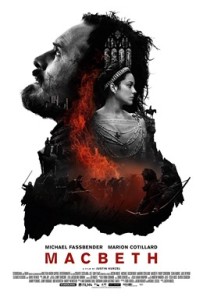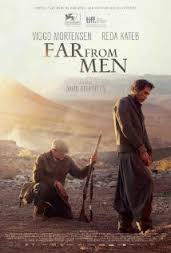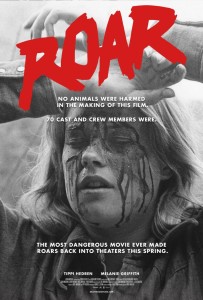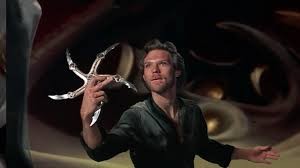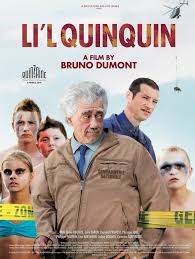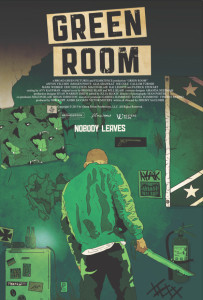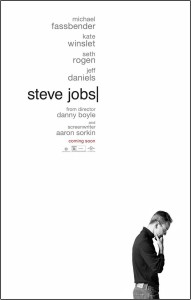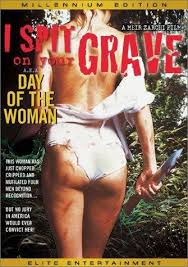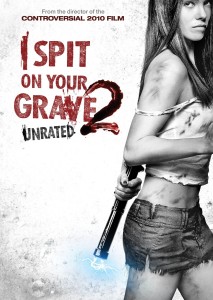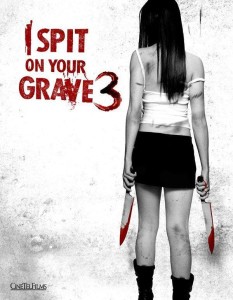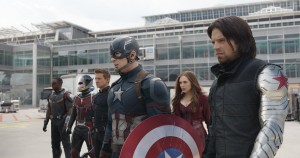We round up a bunch of the smart film lovers and writers that we know to talk about the best and worst films of 2015.
In addition to some of the reviews and Best of 2015 lists we’re posting now that it’s 2016, we’ve also rounded up most of the excellent writers and critics we love to talk movies with. The assignment was to give us a little blurb on their favourite movie of the year, as well as their runners up and least favourites. Keep in mind that we are still seeing some of the best movies of the year roll out, so this list may change for everyone by the time March rolls around and we’ve been able to see everything.
Special thanks to the writers and critics that found the time to be heard, and we hope you discover a movie or two you might not have watched otherwise.
Jorge Ignacio Castillo
Vancouver Film Critic’s Circle / Planet S Magazine / Prairie Dog Magazine / The Canadian Crew.com
My favourite movie(s) of 2015:
![insideout]()
#1) INSIDE OUT: Not only does Inside Out have a strong plot and powerful emotional content. It has the capacity to change the way you think. How many movies can say that? This movie is so brilliant, turning complex mental operations into abstractions; few have noticed Inside Out is gender fluid-aware. This one is for the ages.
#2) 45 YEARS: (Granted, it’s a festival movie that hasn’t officially arrived to theatres): This film slayed me. It’s a slow, simmering drama enhanced by spectacular performances by Tom Courtenay and Charlotte Rampling as an old married couple re-evaluating their relationship. It’s an adult drama made of loaded silences and pauses, the kind of movie we don’t get much anymore.
Worst Movie(s) of the Year: So many: Hot Tub Time Machine 2, Fantastic Four, Project Almanac, Taken 3, Pixels, Terminator: Genysis
Dave Scaddan
The Feedback Society
Note: You can read Dave’s Top 20 Albums of 2015 here.
My favourite movie of 2015:
![the-revenant-poster]()
THE REVENANT: I may just be committing the childish fallacy of saying the last film I saw was the best film I saw, but really, when I think about it, The Revenant wasn’t worse than anything in 2015. It reminds me of two of my favourites from the last two decades: P.T. Anderson’s There Will Be Blood and Jim Jarmusch’s Dead Man. If you like either of those films, there’s no way you’re coming away disappointed with this one. The Revenant boasts Leo in a role he’s actually well-suited for (which doesn’t always happen) and Tom Hardy as such an expertly played villain that he will make you hate him (Nurse Ratched-style) in the next two films you see him in. Unless the next film you see him in is Legend, in which case you’ll get a hate hangover two-for-one. There’s an expansive early shot in this film that’s so lengthy and intricate that it makes Scorsese’s backdoor Copacabana shot look like a Drake video.
Runner Up: The Assassin
Worst Movie of the Year: Star Wars: The Force (read: Farce) Awakens. Full disclosure, I haven’t seen the new Star Wars, nor do I plan to. I started boycotting this shameless toy-commericial-in-disguise long ago. Maybe it’s great. I wouldn’t know. I just hate its presence.
Adrien Begrand
PopMatters / Decibal / NPR / Terrorizor / The Feedback Society
My favourite movie of 2015:
![the-hateful-eight-characters-posters-movie-4]()
I can’t decide on a favourite single movie from 2015, so I’m going to cheat and say the best films I saw were all risk-takers. Gaspar Noé’s Love is a beautiful, explicit-but-not-exploitative, imperfect, profound attempt to capture what he calls “sentimental sexuality.” Quentin Tarantino’s The Hateful Eight is both a glorious exercise in self-indulgence and a blunt portrait of America’s downfall, featuring an Ennio Morricone score for the ages. Jason Banker’s beautifully surreal Felt examines misogyny and rape culture with compassion, humour, and anger, featuring the gifted Amy Everson. Alex Garland’s Ex Machina examines the irony of gender identity in a dominantly male society, all in an inventive sci-fi storyline. David Robert Mitchell’s It Follows proved that a sense of dread is far scarier than any gross-out CGI, in addition to bringing the John Carpenter/Goblin-style synth score back into fashion.
Runner(s) Up: More cheating! What a year it was for crowd-pleasers that actually pleased me: Star Wars: The Force Awakens, Mad Max: Fury Road, Inside Out, The Martian, Trainwreck, Straight Outta Compton
Most Underrated Movie of 2015: Tomorrowland
Nathan Raine
Planet S Magazine / Prairie Dog Magazine / The Feedback Society
Note: You can read Nathan’s Top 10 Movies of 2015 here.
My favourite movie of 2015:
![quinquin]()
P’TIT QUINQUIN: It’s sort of a mini-series, therefore sort of a cheat, but screw it. Quinquin was the only thing I saw all year that I would confidently call a masterpiece. Dumont has been cinema’s foremost trafficker of grim, but his newest effort trades in his trademark bleakness for muted comic absurdity and deadpan humour. Quinquin follows two incompetent cops, in a rural French community, on the trail of a serial killer who leaves body parts stuffed inside of barnyard animals. It’s completely unconventional in its use of nonprofessional actors and its strange focus on the distorted human figure. And, of course, Dumont uses the murder investigation to muse on his favourite subjects of God and man’s inherent capacity for evil. It sounds serious but these themes merely trickle through an amusing adventure story following a bratty young boy and a bumbling investigator. It’s poignant and disarming and bizarre and hilarious and disturbing, and for my money, is the best thing I’ve seen all year.
Runner Up: Mommy
Most Annoying Film of 2015: The Big Short
Tyler Baptist
CFCR’s Reel to Reel, Videonomicon
My favourite movie of 2015:
![greenroom]()
GREEN ROOM: Tense, white knuckled, and pulse pounding. That was me, physically, sitting in — no — gripping the theatre seat while watching what ended up being my favourite film of the year, Green Room. Hot off the heels of the already tightly wound tension of Blue Ruin, writer/director Jeremy Saulnier’s Green Room manages to wind the audience up even moreso when a touring punk band takes a last minute gig to pay for gas at a neo-Nazi clubhouse and things go very, very, very wrong. A masterpiece of a siege movie with smartly written characters, actions and re-actions firmly planted in reality, and featuring Patrick Stewart in a role you’ve never seen him in, Green Room is a grueling roller coaster ride that will leave you out of breath.
Runner Up: The Tribe
Worst Movie of the Year: Area 51
Dan Nicholls
VanCity Buzz / The Feedback Society
My favourite movie of 2015:
![steve-jobs-movie-poster-800px-800x1259]()
STEVE JOBS: Brilliant, maddening, enthralling, off-putting, and straight up impossible to look away from. To some, that would well describe the man Steve Jobs himself and probably this criminally underseen masterpiece — from director Danny Boyle and screenwriter Aaron Sorkin — of the same name. Michael Fassbender leads the proceedings fearlessly in what at times could pass for a cinematically delectable stageplay. As the titular Apple maverick, Fassbender switches dancing partners between a uniformly stellar cast including Kate Winslet, Jeff Daniels, Seth Rogen, and Michael Stuhlbarg. It’s as breathtaking as it is unconventional, as heartfelt as it is intellectual, and it eschews past and future expectations of biopics. In my books, Steve Jobs is the film of 2015.
Runner Up: Sicario
Worst Movie of the Year: Terminator Genisys
Mallory Weiss
CFCR’s Reel to Reel
My favourite movie of 2015:
![love-poster]()
LOVE: My favourite film of 2015 was Gaspar Noe’s latest heart wrenching flick, Love. This film revolves around two main characters — Murphy, a film student, and his partner Electra, an aspiring artist. When Murphy gets another woman named Omi pregnant, his already tumultuous relationship with Electra is compromised — possibly forever. Murphy and Electra’s relationship is shown through unsimulated sex scenes that truly show their unique and mostly unhealthy emotional relationship. I gripped my pillow, I bawled, I rolled my eyes — sometimes all at once. A much more relatable film than Noe’s previous film Enter the Void. I believe that it’s a must see for all open-minded cinephiles.
Runner Up: Girlhood
Worst Movie of the Year: Green Inferno
Craig Silliphant
The Feedback Society / CTV News / CFCR’s Reel to Reel / News Talk 650 CKOM
My favourite movie of 2015:
![tangerine]()
TANGERINE: My favourite film this year was Tangerine, which inhabits the world of transgender prostitution in Hollywood on Christmas Eve. It was shot on iPhones, but this was no gimmick — the movie looks beautiful, capturing golden California skies and the kinetic action of the film. The characters inhabit a sometimes rough world, but the movie finds a certain classic, hilarious screwball humour in their adventures. Tangerine was unique, but recognizable, and gives you a window to a world you probably don’t often see. It works on a snooty art film level, but it was also one of the most fun times I had at the theatre this year.
Runner(s) Up: The Revenant, The Lobster, Mad Max: Fury Road, It Follows, Love
Worst Movie of the Year: Fantastic Four

